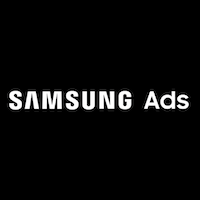Samsung Ads
Samsung Ads delivers innovation through Advanced TV solutions to brands, marketers and agencies around the globe.
Skills
This promoted content is produced by a publishing partner of Open Mic. A paid-for membership product for partners of The Drum to self-publish their news, opinions and insights on thedrum.com - Find out more
New study shows consumers are embracing advertising on TV streaming services
February 24, 2023

Ad-free offerings were the catalyst for the initial success of subscription services. Streamers such as Netflix, Amazon Prime Video, and Disney+ offered seamless, uninterrupted viewing experiences as their unique selling point (USP).
But the landscape is now shifting. Consumers, once averse to the mere mention of advertising within streaming environments, have grown increasingly accepting of a new model - provided they can see clear value in the trade-off.
Samsung Ads and research agency Verve has released a report breaking down advertising engagement rates across four streaming and linear environments: advertising video-on-demand (AVOD), broadcaster video-on-demand (BVOD), subscription video-on-demand (SVOD), and traditional linear. ‘Understanding advertising engagement across different viewing platforms’ focuses on four international markets:
Advertisement
- The UK
- Australia
- India
- Germany
Free-to-access content in streaming environments is experiencing a surge in popularity and was identified as consumers’ most acceptable format for ad consumption in the research across all markets. This is an important factor that has driven AVOD - and also free ad-supported TV (FAST) - to become a critical piece of the television advertising puzzle.
AVOD leads the pack in ad engagement
Linear TV has long been the go-to medium for advertisers trying to connect with audiences in their homes. The pandemic, however, facilitated a change in consumers’ viewing habits. 52% of Samsung TV owners’ total viewing time in H1 2022 was dedicated to streamed content - compared to 48% for linear. This rise in streaming means that advertisers need to rethink their strategy to reach a broader pool of audiences, including those who are heavy or exclusive streamers, and therefore not exposed to linear advertising at all.
The ‘Understanding Advertising Engagement’ report highlighted AVOD as the best performing streaming service for ad engagement. India leads the way with 70% of consumers reporting they ‘sat and watched the ad(s) in full’ or ‘sat and watched some of the ad(s)’. Australia (54%) and the UK (48%) followed closely - with Germany (28%) ranking last.
This, however, does not tell the full story in Germany. Although German consumers were least receptive to advertising on all fronts, there is a generational divide. Almost 60% of Germans aged 18-34 are amenable to advertising across free platforms.
So, AVOD and FAST services can be a powerful asset in advertisers’ pursuit of developing dialogue with younger viewers. But why has ad engagement within these environments outperformed their predecessors?
Keeping the viewer experience positive
Samsung Ads’ research identified three core factors that are driving higher engagement rates for AVOD and FAST, the new kids on the streaming block: relevance, length and excitement.
Consumers desire unique, relevant experiences. The overt sales focus of linear ads was central to respondents’ underwhelming performance in the study. Overall ad activity across AVOD and FAST services, in contrast, was perceived as tailored to the individual - with the knock-on effect being they were less disruptive to the viewing experience.
Excitement also played a part in AVOD and FAST outscoring their counterparts. AVOD ads scored highest across three of the four markets (with India being the exception):
- The UK - 49%
- Australia - 34%
- Germany - 28%
Subscription video-on-demand (SVOD) still remains the most-engaged platform amongst Indian consumers (73%). AVOD, however, at 70%, is close on its heels, reinforcing the growing acceptance for ad-powered content.
And what about BVOD? Viewers typically felt engaged with these services as they were accustomed to the experience of catch-up TV, which typically include more tailored ads than linear broadcast TV. However, the sheer load of ads may have caused greater disruption to the overall viewing experience - particularly as many viewers in the study regarded them as boring and excessively long.
A new streaming dawn
The TV landscape is continuing to evolve. Viewers are embracing advertising in streaming environments - but there’s a catch. Ads need to deliver value to the TV viewing experience. Delivering relevant content can also be used to improve engagement rates. Advertisers that act on these trends and create a value-exchange between themselves and audiences will gain first mover advantage in the future of television advertising.
By Antonia Faulkner, head of marketing & analytics at Samsung Ads Europe and APAC


